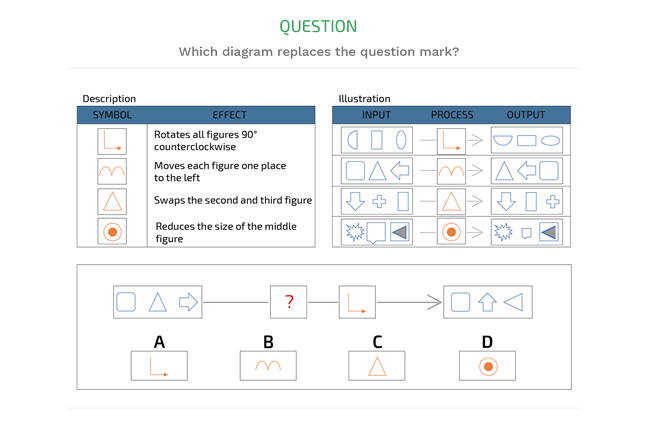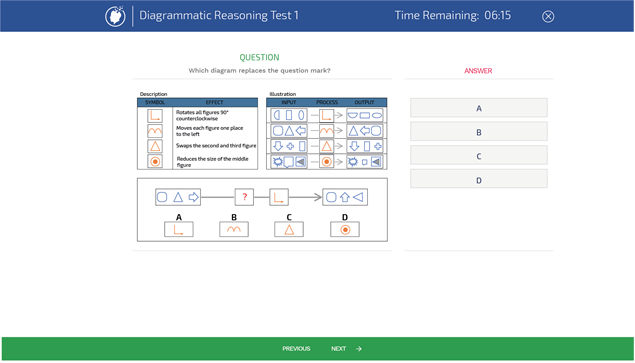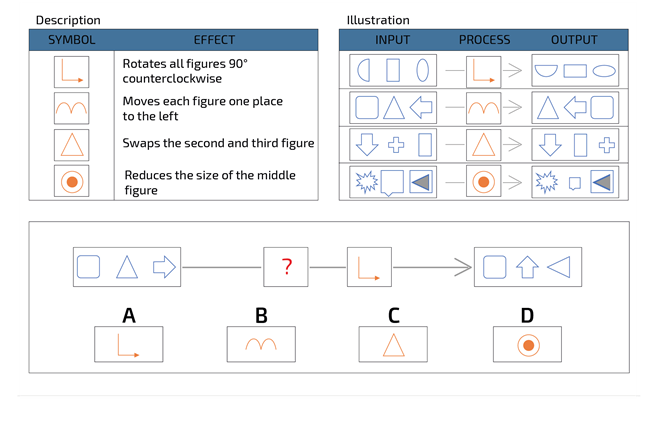Diagrammatic reasoning is the ability to understand and make judgments based on diagrams. It requires the ability to recognise information quickly. It's been around for centuries and has been applied in many different fields, from architecture to biology. Diagrammatic reasoning tests measure your ability to understand the information presented in a diagram.
Diagrammatic reasoning tests measure a candidate’s analytical, decision-making, logical, and abstract reasoning and critical thinking abilities. Diagrammatic Reasoning Tests display a series of operators and their outputs. The candidate’s task is to infer and apply a set of rules to new situations. Candidates will not be required to use any prior knowledge, and the questions on the actual test will not vary depending on the role or specific industry which the candidate is recruited for.
The Diagrammatic Reasoning Test Package helps you ace your actual assessment. All of our practice tests come with extensive explanations and a description of how the questions can be solved. Furthermore, our Personal Progression System will help you track your progress and give a detailed view of your performance. This system will help you identify your stronger and weaker points and provide insight into your areas of development. The progression tool keeps track of your scores, test times, and overall progress.
Start training now and get immediate access to the tests and practice 24/7 on your computer, phone or tablet!
Example of a Diagrammatic Reasoning Test question. Click here for a free test.
In the Diagrammatic Reasoning question above, you need to choose the symbol that replaces the question mark. You do this by inferring the rules and sequences of the symbol, as the following solution explains in detail.

Example of a solution in a Diagrammatic Reasoning Test.
Does your job application require you to pass a diagrammatic reasoning test? Don’t worry we’ve got you covered! Assessment-Training.com offers realistic test simulations developed by psychologists with years of experience designing tests for large publishers such as CEB/Gartner, Talent Q, Saville Assessment, Kenexa. All our tests are extremely similar to the real test so you will be able to prepare for your diagrammatic reasoning exam in no time!




